North Africa
North Africa is a cultural subcontinent in the northern part of Africa. It is sometimes defined as extending from the shores of the Atlantic, from Morocco to the west, to the Suez Canal and to the Red Sea, in Egypt to the east. The most commonly accepted definition includes from East to West : Egypt, Sudan (sometimes included in East Africa), Libya, Tunisia, Algeria, Morocco, Western Sahara and Mauritania (often included in West Africa). The United States Census Bureau defines North Africa as Algeria, Libya, Egypt, Morocco and Tunisia. The countries of North Africa share a common ethnic, cultural and linguistic identity specific to this region, such as the language (Arabic), as well as religion (Islam). North Africa has been inhabited by Berbers since the beginning of history, while the eastern part of North Africa was home to the ancient Egyptians, who maintained close relations with the Berbers during antiquity. After the Muslim conquest in the 7th century, the region underwent an Arabization and Islamization process which has since redefined its cultural landscape. The distinction between North Africa and sub-Saharan Africa is historically and ecologically significant due to the natural barrier created by the Sahara Desert for much of modern history. North Africa is populated by Arabs and Berbers, while sub-Saharan Africa is populated by blacks. From 4000-3600 BC. AD, following the abrupt desertification of the Sahara due to gradual changes in Earth’s orbit, this barrier culturally separated the North from the rest of the continent. As the maritime civilizations of the Phoenicians, Greeks, Romans, Muslims and others facilitated communication and migration across the Mediterranean Sea, North African cultures were more closely linked to Southwest Asia and Europe than in sub-Saharan Africa. Islamic influence in the region is also significant, and North Africa is a major part of the Muslim world.
An increasing number of researchers have postulated that North Africa, rather than East Africa, served as a point of exit for modern humans who first left the continent during migration from Africa.
Etymology
North Africa is also called White Africa. This term contrasts with that of “black Africa”, designating sub-Saharan Africa. Georg Wilhelm Friedrich Hegel also called it “European Africa” while Elisha Reclus saw in North Africa an appendage of the Latin Arc. The expression white Africa referred either geographically to the north of the Sahara or, ethnically, to the “white” minorities of “black” Africa : Afrikaners in the south, Tuaregs in the Sahel.
Geography
The Atlas mountains extend over a large part of Morocco, northern Algeria and Tunisia, are part of the fold mountain system which also crosses much of southern Europe. They retreat to the south and east, becoming a steppe landscape before meeting the Sahara Desert, which covers more than 75% of the region. The sediments of the Sahara cover an ancient plateau of crystalline rock, some of which are more than four billion years old. South of the Atlas is the arid and desert expanse of the Sahara Desert, the largest sandy desert in the world. In places, the desert is cut by irregular rivers called wadis (or wadis) which do not run until after the precipitation but are generally dry. The main reliefs of the Sahara include ergs, large seas of sand which sometimes form immense dunes ; the hammada, a flat rocky plateau without soil or sand ; and the reg, a flat surface made up of gravel or small stones. The Sahara covers the southern part of Morocco, Algeria and Tunisia, and most of Libya. Only two regions of Libya are outside the desert : Tripolitania to the northwest and Cyrenaica to the northeast. Most of Egypt is also desert, with the exception of the Nile and the irrigated land along its banks. The Nile Valley forms a narrow fertile streak that spans the entire length of the country. The sheltered valleys in the Atlas Mountains, the Nile Valley and Delta, and the Mediterranean Sea are the main sources of fertile agricultural land. A wide variety of valuable crops, including grains, rice and cotton, and woods such as cedar and cork, are grown. Typical Mediterranean cultures, such as olive, figs, dates and citrus fruits, also thrive in these regions. The Nile Valley is particularly fertile, and most of the population in Egypt lives near the river. Elsewhere, irrigation is essential to improve crop yields on the margins of the desert.
North Africa’s countries
-
- Algeria
- Morocco
- Western Sahara
- Tunisia
- Libya
- Egypt
- Mauritania
-
Libya

UN Envoy To Libya Bathily Calls For International Help To Resolve Libya’s Crisis
United Nations (UN) envoy to Libya, Abdoulaye Bathily, on Sunday called for international support to help the country overcome the…
Read More » -
Tunisia

Tunisia’s Central Bank Governor: Country May Face Economic Crisis Without IMF Deal
Tunisia’s central bank governor on Wednesday warned that the country may face economic crisis if it does not enter an…
Read More » -
Libya

Libyan Prime Minister Dbeibah Says His Government Ready To Hold Elections In 2023
Libyan Prime Minister Abdul-Hamed Dbeibah on Monday said his Tripoli-based government is all set to hold general elections in the…
Read More » -
Libya
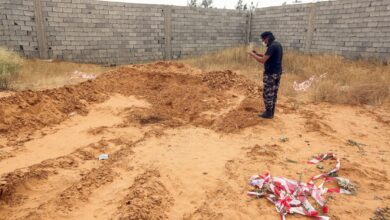
Libyan Authorities Discover Mass Grave With 18 Bodies In Former Islamic State Stronghold
Libyan authorities on Sunday said they have discovered a mass grave with 18 bodies in the Sabaa area of Sirte…
Read More » -
Tunisia

Tunisian President Says Less Voting Turnout Better Than Rigged Elections
Tunisian President Kais Saied on Wednesday downplayed the massive abstention in the parliamentary elections held earlier this month, reported The…
Read More » -
Tunisia

Tunisian Health Authorities Warn Of A Renewed COVID-19 Threat Next Year
Tunisian authorities on Wednesday warned of a renewed COVID-19 threat and urged the public to get themselves vaccinated against the…
Read More » -
Libya

Libyan Eastern Commander Announces Final Opportunity To Hold Elections
Libyan eastern commander Khalifa Haftar on Saturday announced a final opportunity to chart out a road map for elections, reported…
Read More » -
Tunisia

Tunisia’s Trade Union Warns President Of Conducting Second Round Of Election
Tunisia’s most powerful trade union, UGTT, has warned the country’s president saying that chaos could follow if the second round…
Read More » -
Tunisia

Tunisia’s Opposition Alliance Asks President To Quit After Lowest Turnout Ever
Tunisia’s main opposition alliance leader on Sunday called out President Kais Saied to step down immediately, a day after voters…
Read More » -
Libya
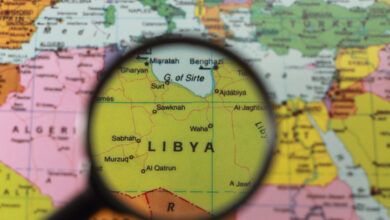
UNSMIL Strongly Condemns Heinous Killing Of At Least 15 Migrants In Libya
The United Nations Support Mission in Libya (UNSMIL) on Sunday strongly condemned the heinous killing of at least 15 migrants…
Read More » -
Libya

Western Countries Reiterate Support To Hold Election In Conflict-Hit Libya
Western countries have reiterated support to hold presidential and parliamentary elections in the conflict-hit Libya as early as possible, reported…
Read More » -
Egypt

Egyptian Government Sends Two Military Planes With Aid Material To Somalia
Egyptian government on Sunday dispatched two military planes loaded with aid to Somalia on President Abdel Fattah el-Sisi’s order, reported…
Read More » -
Egypt

Amnesty Accuses Egypt Of Covering Human Rights Violation Ahead Of COP27 Summit
Amnesty International on Wednesday accused Egypt’s government of trying to cover up unrelenting human rights violation in order to improve…
Read More » -
Tunisia

Tunisian President Introduces New Electoral Law Reducing Political Parties’ Influence
Tunisian President Kais Saied on Thursday introduced a new electoral law that reduces the influence of political parties in elections,…
Read More » -
Tunisia

Tunisia’s Main Opposition Alliance Decides To Boycott December Polls To Replace Parliament
Tunisia’s main opposition coalition on Wednesday announced its members including the largest political party Ennahdha have decided to boycott December…
Read More » -
Tunisia

Tunisian Government Recalls Ambassador To Morocco Over Western Sahara Dispute
Tunisian government On Saturday said it has decided to recall ambassador to Morocco for consultations, after the kingdom did the…
Read More » -
Libya
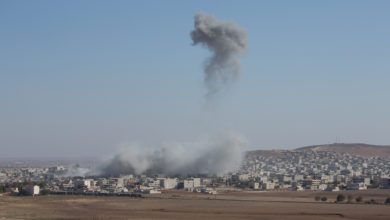
Libya’s Health Ministry Reports Death Of 32 People In Recent Deadly Clashes
Libya’s health ministry on Sunday said at least 32 people were killed and more than 150 got injured in clashes between…
Read More » -
Libya
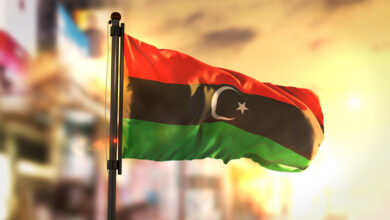
UNSMIL Expresses Deep Concern Over Mobilization Of Forces In Tripoli
The U.N. Support Mission in Libya (UNSMIL) on Tuesday voiced deep concern regarding the ongoing mobilization of forces in Tripoli…
Read More » -
Tunisia

Tunisian Court Suspends Dismissal Of 50 Judges By President Kais Saied In June
A Tunisian court on Wednesday suspended the dismissal of some 50 judges by President Kais Saied in early June, reported…
Read More » -
Egypt

Egypt’s Foreign Minister Submits Letter To UNSC Rejecting Ethiopia’s Filling Of GERD
Egypt’s Foreign Minister Sameh Shoukry on Friday submitted a letter to the United Nations Security Council (UNSC), to register his…
Read More » -
Libya

UN Security Council Extends Political Mission In Libya For Just Three Months
The United Nations (UN) Security Council on Thursday voted to extend its political mission in Libya for only three months…
Read More » -
Tunisia

Tunisian President: Draft Decree To Be Prepared For Holding Parliamentary Election
Tunisian President Kais Saied on Wednesday said draft decrees will soon be prepared for holding election for a new parliament…
Read More » -
Tunisia

Tunisia’s Electoral Commission Says New Constitution Passed In Voting
Tunisia’s electoral commission on Tuesday announced the new constitution has passed in a referendum with a 30.5% turnout, reported The…
Read More » -
Egypt
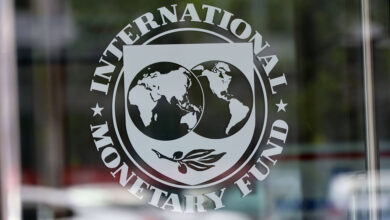
IMF Says Egypt Needs To Make Progress On Fiscal And Structural Reform For Support
The International Monetary Fund (IMF) on Tuesday said Egypt needs to make decisive progress on fiscal and structural reform if…
Read More » -
Tunisia

Tunisia’s Electoral Commission: Voting Turnout Of Just 27.5% On New Constitution
Tunisia’s electoral commission on Monday announced only 27.5% of 9.3 million registered voters voted on Monday for a controversial referendum…
Read More »

